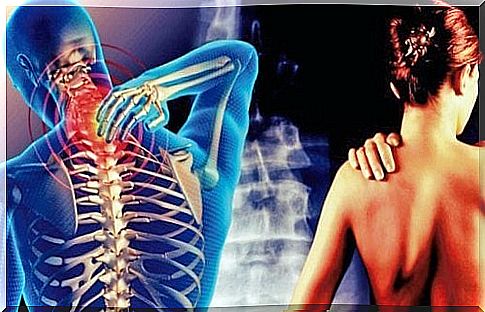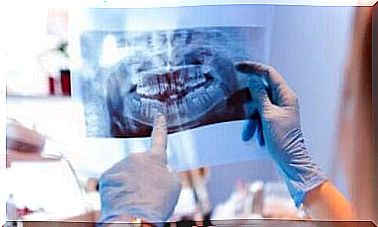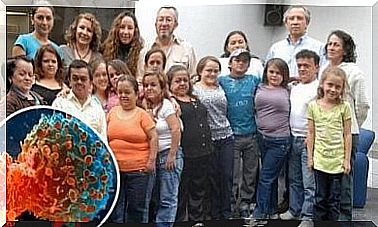Cervicobrachial Syndrome: Pain From The Neck Down Into The Arms

We may find the name a little disturbing, but cervicobrachial syndrome is more common than we think.
It means pain in the cervical region that begins in the neck and goes down into the spinal cord until it reaches the arms and even the fingers.
It is very disabling. A misconception about this condition, however, is that it is only thought to affect people who play sports.
Below we would like to provide more information on this issue, which is often not discussed.
Cervicobrachial syndrome: when movement becomes painful
Moving your head, reaching for something, sitting, reading and even breathing: everything is done with great suffering. Cervicobrachial syndrome is mainly focused at the spine.
We do not face a simple case of whiplash or a strained muscle. It’s much more.
Imagine the area above the spine. That is, the vertebrae C1 to C7, which are precisely the smallest.
- Inside these tiny vertebrae there are ligaments, tendons, muscles, nerve fiber…
- When some of these become inflamed, the pain reaches different areas of our body.
It is common for inflammation to begin in the spine and reach the shoulders, shoulder blades, arms and even the torso.
What is the cause of cervicobrachial syndrome?
- Traumatic injuries: as mentioned earlier, one of the primary causes of cervicobrachial syndrome is injuries created by an accident or practice of a sport. Displacements, fractures, sprains or muscle ruptures are usually the primary causes.
- At the same time can. This must be taken into account.
- Inflammatory processes such as arthritis can also cause this.
- On the other hand, people afflicted with degenerative diseases such as rheumatoid arthritis may eventually develop cervicobrachial syndrome.
- Nor can we discharge infectious diseases, such as tuberculosis, e.g.

What are the symptoms?
You’ve probably heard someone say, “It’s like I’ve been stabbed in the back.” In a way, it’s very similar.
The difference is that in addition to this central focal point, the pain spreads to other areas of the body in the form of very intense heat.
- Cervicobrachial syndrome in addition to the described pain is also characterized by intense cramps, sensitivity disorders, muscle weakness, tingling or a feeling of intense cold or heat, as well as a burn.
- At the same time, it is possible that we experience headaches, neck stiffness, dizziness or nausea when sitting down … Almost every movement is accompanied by intense discomfort.
What treatments exist?
Cervicobrachial syndrome requires a very personal treatment that only healthcare professionals can offer. First, it is necessary to use the correct medication to reduce the inflammation.
- Physiotherapy plays a role in the fight against pain and restoration of movement to the extremities.
- Another very suitable technique is hot and cold therapy. Hot showers, hot water bags and even massages with rosemary and alcohol are very effective.
- Nor can we forget that once we are diagnosed with cervicobrachial syndrome, it is necessary to lie down and relax. All of these conditions with great muscle and joint pain require that we, above all, think differently about life.
- Specialists recommend resting on the back with the arm experiencing pain in just behind the head.
Cervicobrachial syndrome has a good prognosis
In general, cervicobrachial syndrome has a good prognosis. What does it mean? It means that
- Undoubtedly, the problem is most significant in patients with some form of arthritis or rheumatoid arthritis. When confronted with chronic illnesses, it is normal to experience some periods of improvement mixed with weeks of intense discomfort.
- In our case, if we suffer from some of these genes, we must do everything we can to lead a healthy lifestyle. A balanced diet, moderate exercise and monitoring of nodes during stress and anxiety is very helpful.
For patients with more complex symptoms, it is possible to consider surgery. However, our doctors will always make this decision.









